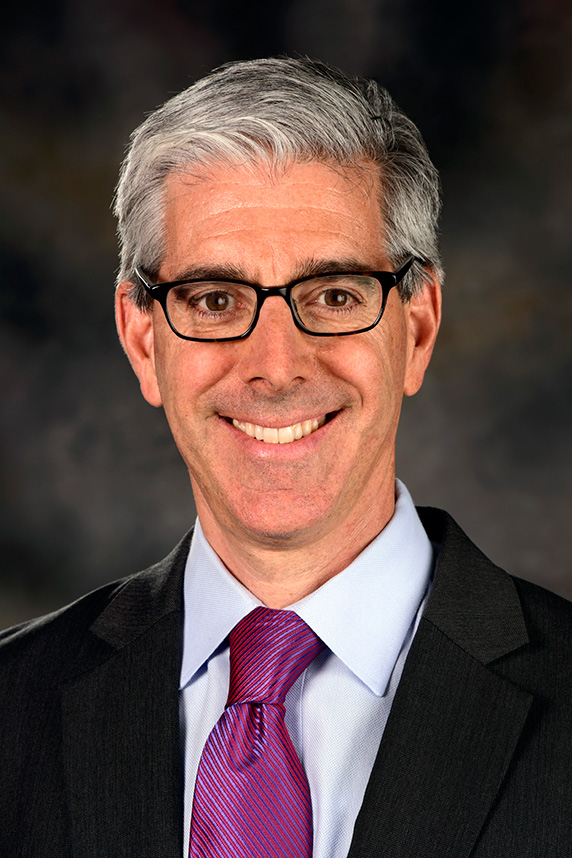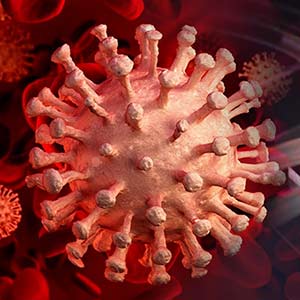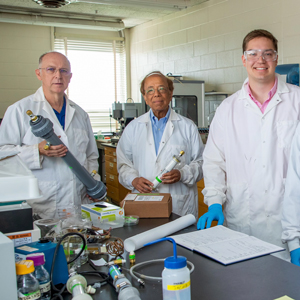Scientists researching the spread of infectious diseases learned about National Oceanic and Atmospheric Administration (NOAA) modeling tools during an August 3 webinar. The agency’s atmospheric data may help to improve understanding of the transmission of COVID-19.
The NIEHS Global Environmental Health (GEH) Program hosted “Working with NOAA climate and weather Data: Opportunities to enhance infectious disease modeling and pandemic preparedness.” Collaborators included NOAA and the Models of Infectious Disease Agent Study Coordinating Center, which is funded by the National Institute of General Medical Sciences. Some 250 individuals attended.
More information, better predictions
 Scientists are increasingly aware of the interplay between weather and disease, Benjamin said. (Photo courtesy of Stan Benjamin)
Scientists are increasingly aware of the interplay between weather and disease, Benjamin said. (Photo courtesy of Stan Benjamin)“While health is not one of NOAA’s core mission areas, it is related to all of them,” said Stan Benjamin, Ph.D., from the NOAA Global Systems Laboratory. “When COVID-19 started, we asked ourselves if there were ways that climate and weather information could be useful to the health community.”
Juli Trtanj, One Health and Integrated Climate Extremes Research Lead in the NOAA Climate Program Office, also participated in the webinar. NIEHS Senior Advisor for Public Health John Balbus, M.D., moderated the event.
Balbus and Trtanj co-chair the Interagency Crosscutting Group on Climate Change and Human Health (CCHHG) in the Global Change Research Program. Their June 2019 report addressed the spread of infectious diseases sensitive to changes in climate patterns.
NOAA recently developed a resource page to expand access to environmental data, which may aid infectious disease modelers. They could incorporate climate and environmental factors into their analyses and enhance predictions about the seasonality or emergence of infectious diseases.
One Health lens
 “This is a big deal for us, to be able to have this conversation with you and figure out how to move forward,” said Trtanj. (Photo courtesy of Juli Trtanj)
“This is a big deal for us, to be able to have this conversation with you and figure out how to move forward,” said Trtanj. (Photo courtesy of Juli Trtanj)Trtanj discussed how NOAA data have helped to shed light on health challenges such as Rift Valley fever in East Africa, dengue fever in Peru and Puerto Rico, vibrio growth in the Chesapeake Bay, and harmful algal blooms.
“Understanding environmental conditions helps us predict risk, but we can’t necessarily predict disease outbreak,” noted Trtanj.
NOAA research takes place in the context of a One Health approach, she explained. That approach, which also is promoted by NIEHS leaders, is based on the concept that human health is closely linked to the health of animals and the environment.
“We take health seriously at NOAA,” said Trtanj. “Our strategy is to understand the needs of the health community and provide it with modeling resources and tools.”
The COVID-19 pandemic has resulted in an increase in infectious disease modeling studies, some of which include environmental data, Trtanj noted. Such studies are based on urgent questions about, among other things, seasonal transmission of the disease and comorbidities involving respiratory conditions linked to the environment.
Data alignment
 “This collaboration brings together federal agencies to consider the intersection of environmental factors and the COVID-19 pandemic,” said Balbus. (Photo courtesy of Steve McCaw)
“This collaboration brings together federal agencies to consider the intersection of environmental factors and the COVID-19 pandemic,” said Balbus. (Photo courtesy of Steve McCaw)A key question going forward will be how to meaningfully merge NOAA data with health data. Meteorological data are easily gridded, Balbus noted, in that they can be overlaid on a physical space. “Health data are not,” he said. “The two do not easily align.”
Benjamin agreed. “COVID-19 modeling is really more about a given location and the evolution of the disease with that population,” he said.
Trtanj urged researchers to think in new ways. “We've got to be creative, or we're going to continue to be surprised by COVID-19, SARS [severe acute respiratory syndrome], MRSA [methicillin-resistant Staphylococcus aureus], and other things,” she said.
“We’re prediction people,” she told the audience, referring to her NOAA colleagues. “But we're also mandated to share our knowledge, to partner with those of you doing health research and make sure that we’re doing the best job we can to meet your needs.”
(John Yewell is a contract writer for the NIEHS Office of Communications and Public Liaison.)









